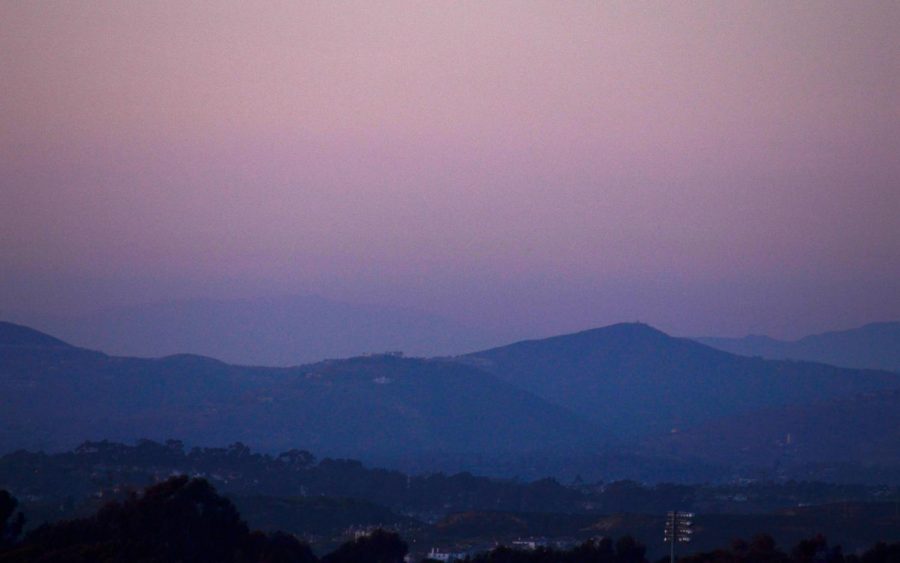California’s Snowline Projected To Be 1600 Feet Higher By 2100
Photo by Amanda Parmele/ UCSD Guardian
Jun 5, 2023
California’s snowline is projected to be 1600 feet higher by the second half of the century due to global warming, researchers at Scripps Institution of Oceanography and their collaborators have found. The study was focused on the Sierra Nevada and the Southern Cascades.
A snowline refers to the elevation above which snow falls from a storm. The higher the elevation of the snowline, the less of a mountain is covered in snow.
“As the snowline rises, the snow is confined to higher and higher elevations on the mountain,” stated SIO research meteorologist Alexander Gershunov, who studies regional weather patterns and extreme weather events in relation to climate variability and climate change. “So, the higher the snowline, the less snow we typically have [and] the less of the mountain covered in snow. Only the top of the mountain, the higher elevations, are going to be covered in snow as warming trends intensify.”
Assistant Research Professor of Atmospheric Sciences at the Desert Research Institute in Reno, Nevada Benjamin Hatchett explained further that in the regions below a snowline, precipitation, if there is any, is found in the form of rain instead of snow.
“We’re talking about the elevation at which snow turns to rain, and, so, the lower that elevation is, the more of the mountains are seeing snowfall,” Hatchett said.
Consequently, as the Earth warms and the snowline becomes higher in California, the state’s water cycle is increasingly looking much more different than it once did. Whereas normally precipitation as snow remains on mountains during the winter and slowly melts over the late spring and summer, more precipitation may fall as rain in the winter instead, running off immediately, both Hatchett and Gershunov explained.
“We have been operating for the past 150 years or so under this assumption that during the winter, precipitation will mostly fall as snow, and we will accumulate a snow pack that serves as our free bank account, our natural reservoir. Then in the spring, [it’ll] start melting,” Hatchett said. “But as the snowline rises, we’re going to start seeing less area with which we have that natural reservoir occurring.”
According to Gershunov, “These changes mean more and more years will actually be snow free, and our seasonal snow cover will just not occur, or it’s not going to last as long, especially at low- and mid-elevations.”
The rise in snowline therefore also means that there will be a loss of snow, which will have its greatest impacts in the seasons following winter.
“As we lose snow, that’s going to mean that our rivers and streams and lakes are going to have less water in them during the summer and especially in the fall,” Hatchett said.
This will have devastating effects on the environment, particularly in relation to floods, wildfires, and air quality. As rain runs off mountains without freezing, there will be a high risk of flooding. And with less snow melt in the late spring and in summer, there is more time for the environment to dry out, creating perfect storm conditions for wildfires, negatively affecting air quality.
“There are these, what we call, cascading impacts. If we lose all our snow earlier, now the land has more time to dry out, and we have a bigger window during which we can have wildfires taking place,” Hatchett explained. “That allows the fire season to start earlier and potentially go much longer, and we can have larger, and more severe, and more frequent fires, all of which … in the severe cases, irreversibly change our environment.”
Further, this means drastic impacts on daily life in terms of water consumption and recreational activities.
“We will have challenges meeting the needs of our agricultural production if the way that water comes changes,” Hatchett said. “It’s also going to have big impacts on recreation, so the ski season is going to be shorter and more confined to the higher elevation locations, the summertime river rafting season is going to get a lot shorter, and in some years is not going to be there at all.”
According to Gershunov, addressing global warming can mitigate climate change and rising snowlines.
“Mitigation of global climate change will lessen the impacts of what we’re talking about. Our study assumed that no mitigation will take place, that we will burn fossil fuels and release greenhouse gasses business as usual … which is the scenario we’re kind of tracking right now,” he said. “But I hope that we will actually start moving much more aggressively towards a future where we produce and use energy in clean and sustainable ways and that can slow down that process and lessen the impacts that we describe.”
Gershunov went on to suggest that years in which we see a lot of snow, like this one, are uncommon but still fit within a trend of overall average warming of the planet.
“Every now and then, we get a big snow year, like this one, but they’re becoming more and more rare,” Gershunov explained. “One of the reasons there’s so much interest in this study is that it happened to come out in a very snowy year, [though] it is within natural variability historically. But what’s natural is changing, and I suspect that we will see fewer and fewer years like this one and that we’ll probably remember this year for its snowpack for a very long time to come.”
Hatchett does not view these findings as somber but rather as inspiration to do something to address climate change.
“Rather than viewing this as more doom and gloom, we should use it as motivation to make the positive changes we know we need and can make in order to promote a future with less climate impacts,” Hatchett said. “These changes will not only improve the quality and health of our lives and environment in the future but will also make us more resilient to weather and climate extremes in the present.”
















